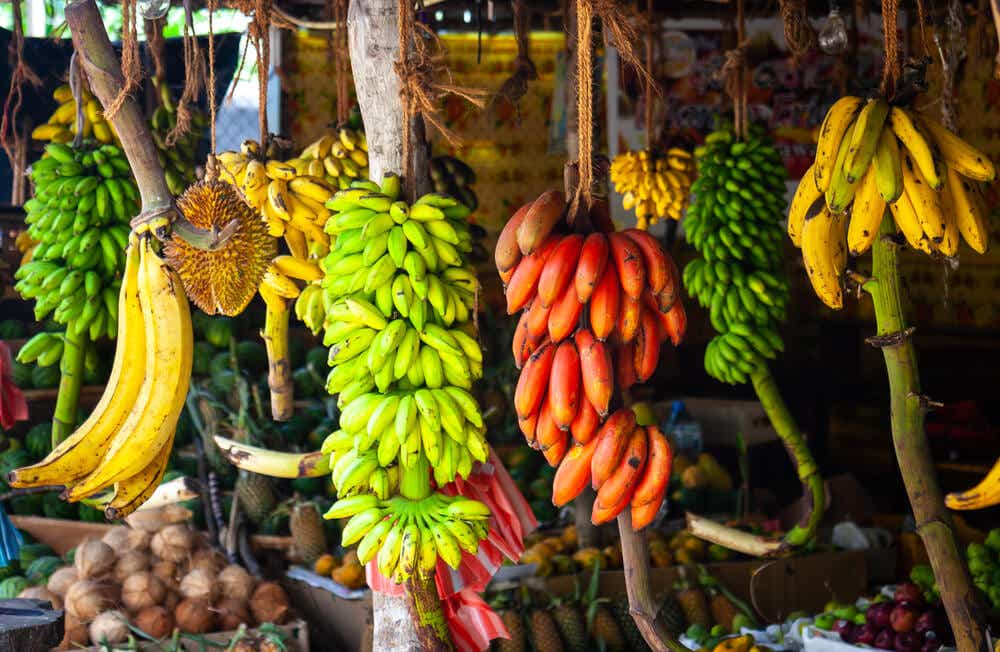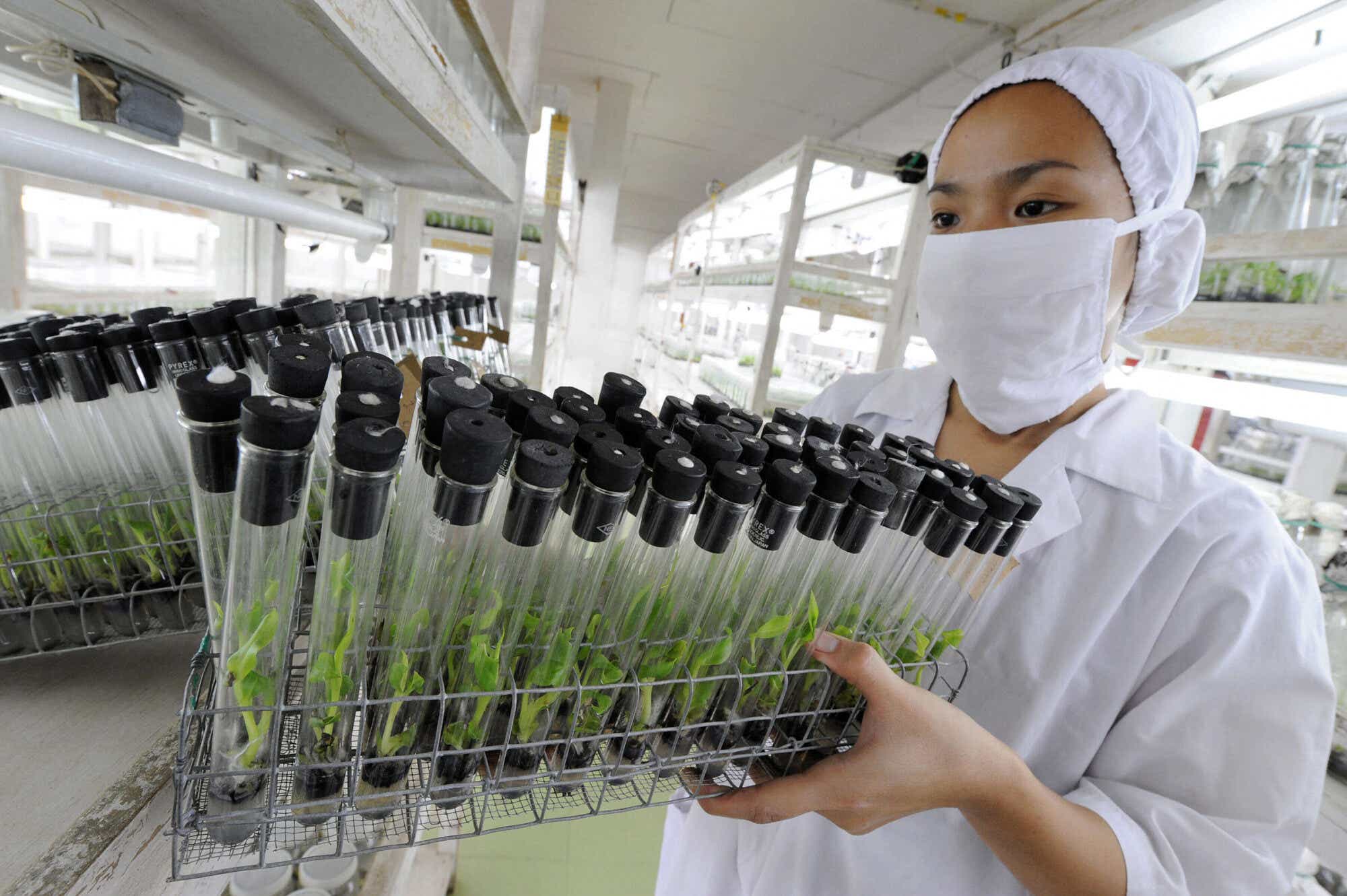Consider the banana. At least in the U.S., there’s no debate as to what it looks like: Its vivid yellow and simple, sleek (and some would say suggestive) shape is immediately recognizable and utterly familiar. Unlike, say, the tomato which comes in an array of different colors, shapes, and sizes for shoppers to choose from, the bananas we pack for lunch or blend into our smoothies are astoundingly consistent.
But that uniformity has brought the banana we know and love to the brink of extinction. A staggering 95 percent of exported bananas today are of one variety, known as the Cavendish. And this monoculture poses a significant threat to the fruit as we know it, says Gert Kema, Ph.D., a professor of tropical phytopathology and banana breeder at Wageningen University in the Netherlands.
Two years ago, the Cavendish was nearly wiped out by a strain of Panama disease, or banana wilt, called Tropical Race 4 (TR4). The soil-inhabiting fungus originated in Indonesia and for about 20 years was restricted to Southeast Asia. But in recent years, it made the jump across the Atlantic and in 2019 was detected in Latin America — the heart of the global banana export marketplace. That pushed Colombia to declare a state of emergency, as the country raced to stop the spread of the fungus, destroying crops and placing plantations spanning thousands of acres under quarantine in an attempt to stop the spread of the fungus.
TR4 has put the crop’s major producers on high alert, and jolted an industry that’s grown largely complacent, Dr. Kema says. While other growers have cultivated new breeds, creating disease-resistant strains or more tasty varieties of our favorite fruits and vegetables, banana producers have stuck stubbornly with the Cavendish.

That’s partly because the Cavendish is a uniquely hardy crop, and that resilience is why it’s “conquered the world, so to speak,” says Dr. Kema. It rose to prominence about a century ago, when another strain of Panama disease devastated what was then the dominant variety, a type of banana called the Gros Michel, which was generally considered more flavorful and less prone to bruising. But because the Cavendish proved resistant to this strain of Panama disease (and remains so today), growers quickly adopted it, Dr. Kema says.
Scientists have warned against the market’s dangerous monoculture for some time. More than 10 years ago, Dan Koeppel, the author of Banana: The Fate of the Fruit That Changed the World, said in an interview with NPR that there was pretty much a consensus among experts that TR4 would eventually reach Latin America and devastate the crop.
“It only takes a single clump of contaminated dirt, literally, to get this thing rampaging across entire continents,” Koeppel said.
The Cavendish has another deadly fungus to contend with too, Dr. Kema says. Black Sigatoka, an airborne disease capable of crippling the banana, has spread globally, and according to Dr. Kema’s research is growing more and more resistant to pesticides.
“The sad thing is now there’s nothing to replace the Cavendish, and that is really truly frightening,” Dr. Kema says, in part because people in developing countries rely heavily on bananas for sustenance.
What will the banana of the future look like?
Now, major banana producers are being forced to innovate. Dr. Kema is leading a project to grow banana trees in substrate — namely coco peat and rockwool — rather than soil, which can become contaminated with Panama disease. Researchers in Australia have also had some success creating genetically modified banana trees capable of withstanding TR4. But the question is whether consumers will be open to a GMO banana. Plus, there’s plenty of legislation that could make bringing a genetically modified product to market quite difficult, which is why Dr. Kema is convinced the way forward is through breeding.
Along with his team at Wageningen University and KeyGene — a startup he’s involved with that’s backed by the Bill & Melinda Gates Foundation — Dr. Kema is on his way to breeding a better banana. Breeding a new variety of the fruit should take about a decade, which means they still have about six or seven years until they’d be able to produce a banana that could potentially be sold in stores, he says. They have had conversations about developing bananas of different colors, but it’s most likely the banana of the future will still be yellow.

But more importantly, Dr. Kema’s confident that they will be able to breed something that can weather Panama disease and is even tastier than the Cavendish, by pulling from the number of varieties throughout Southeast Asia and creating an ideal genetic mix.
“The genetic potential is there,” he says. “So I really do believe consumers can expect better bananas.”









